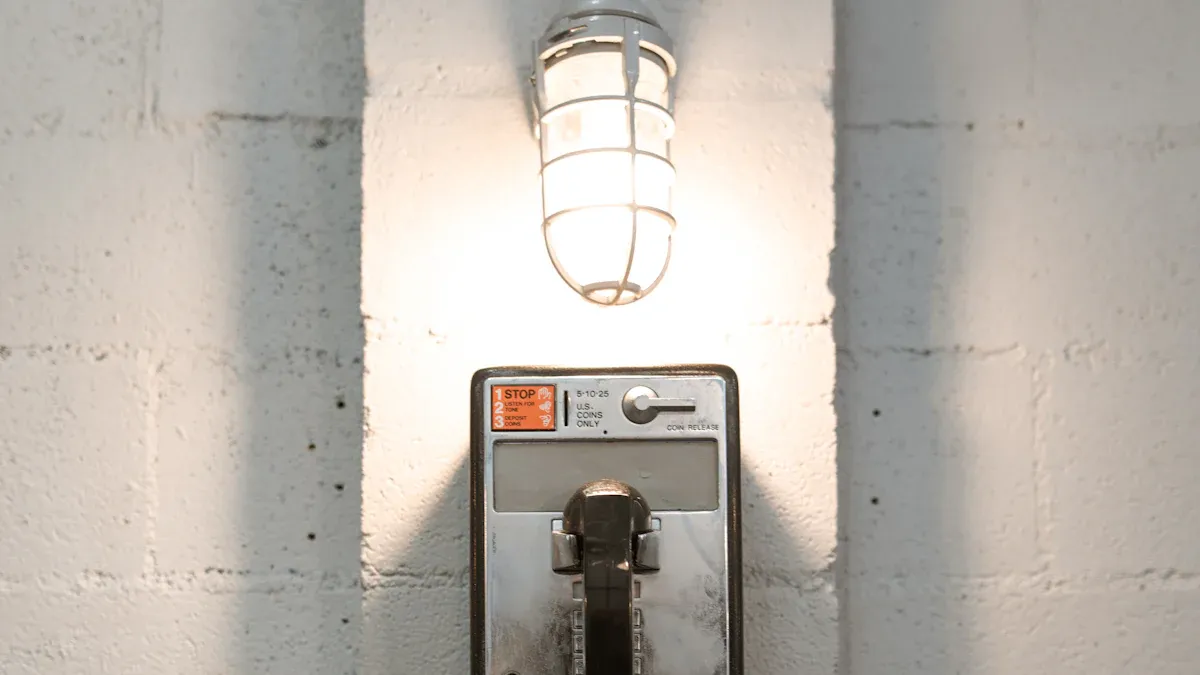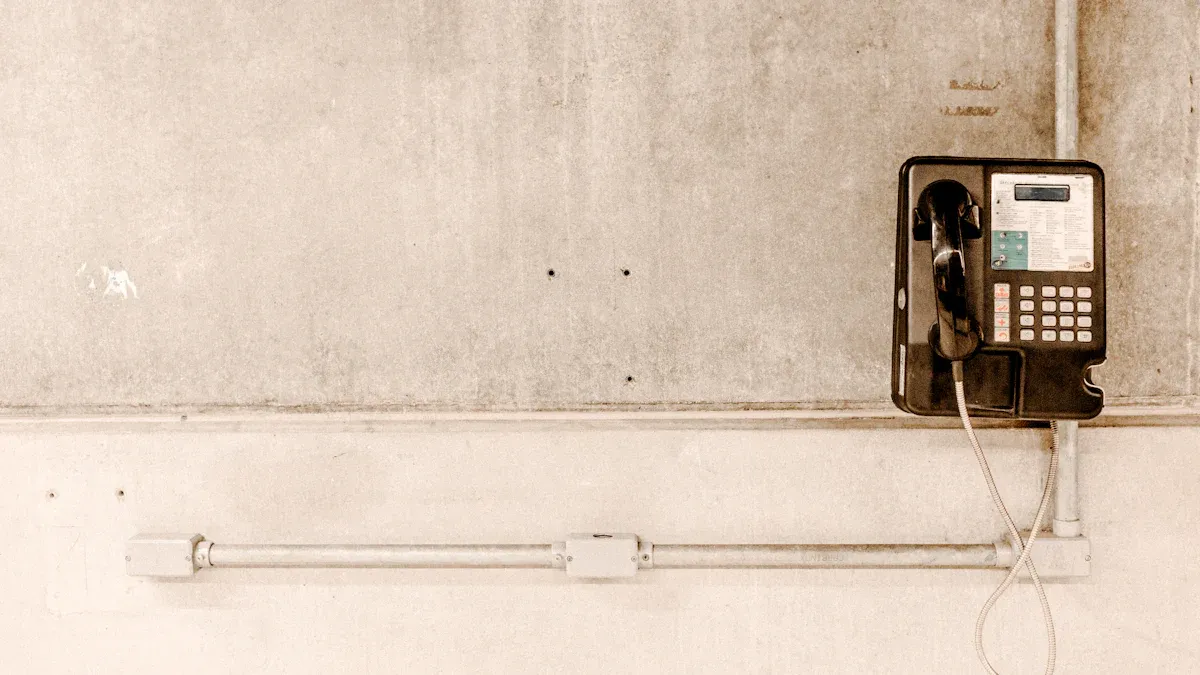
Proper installation of an industrial telephone handset is critical for maintaining operational efficiency. Errors during setup can lead to system failures, costly downtime, and unnecessary expenses. Industrial environments demand precision and attention to detail. Careful planning, combined with methodical execution, ensures the equipment functions reliably under demanding conditions.
Key Takeaways
- Check if the handset works with your system to avoid problems.
- Look at the environment to pick handsets that handle heat or wetness.
- Use proper tools to stop damage and keep it working well.
Mistake #1: Ignoring Compatibility with Existing Systems
Verifying system compatibility
Before installing an industrial telephone handset, verifying its compatibility with existing systems is essential. Each handset must align with the technical specifications of the current communication infrastructure. This includes checking voltage requirements, network protocols, and connection types. Failure to confirm these details can lead to operational disruptions or even damage to the equipment. A thorough review of the system’s documentation and the handset’s technical manual ensures a smooth installation process.
Identifying common compatibility challenges
Compatibility issues often arise when integrating new handsets into older systems. Legacy systems may lack support for modern features, such as VoIP or advanced signaling protocols. Additionally, mismatched connectors or incompatible wiring can create significant obstacles. Industrial environments may also introduce unique challenges, such as interference from heavy machinery. Identifying these potential problems early allows for proactive solutions, such as using adapters or upgrading outdated components.
Ensuring seamless integration with current infrastructure
Seamless integration requires careful planning and execution. Installers should test the industrial telephone handset in a controlled environment before full deployment. This step helps identify any connectivity or performance issues. Using standardized components and following industry best practices further ensures compatibility. Collaboration with system engineers or technical experts can also streamline the process, reducing the risk of errors and ensuring the handset functions as intended.
Mistake #2: Overlooking Environmental Requirements

Evaluating the industrial environment
Industrial environments often present unique challenges that can impact the performance of communication equipment. Factors such as high humidity, extreme temperatures, and exposure to dust or chemicals can compromise the functionality of an industrial telephone handset. Evaluating the specific conditions of the installation site is a critical first step. Installers should assess variables like temperature ranges, potential exposure to corrosive substances, and the presence of heavy machinery that may cause vibrations or electromagnetic interference. This evaluation ensures that the selected equipment can withstand the demands of the environment.
Selecting handsets for specific environmental conditions
Not all industrial telephone handsets are designed for the same conditions. Some models are built to resist moisture, while others are optimized for high-temperature environments. Selecting the right handset involves matching its specifications to the environmental requirements. For example, handsets with IP ratings provide protection against dust and water ingress. Models with reinforced casings may be necessary for areas prone to physical impacts. Consulting the manufacturer’s guidelines and technical specifications helps ensure the chosen handset meets the operational demands of the site.
Protecting against dust, moisture, and temperature extremes
Environmental hazards like dust, moisture, and temperature extremes can lead to equipment failure if not addressed. Protective measures, such as enclosures or weatherproof coatings, can extend the lifespan of an industrial telephone handset. Regular maintenance, including cleaning and inspection, also plays a vital role in preventing damage. In environments with fluctuating temperatures, selecting handsets with thermal resistance ensures consistent performance. Proactively addressing these factors minimizes the risk of downtime and costly repairs.
Mistake #3: Using Improper Tools and Equipment
Essential tools for installing industrial telephone handsets
Installing an industrial telephone handset requires specific tools to ensure a secure and efficient setup. Basic tools like screwdrivers, wire strippers, and crimping tools are essential for handling cables and connectors. For environments with unique challenges, specialized equipment such as torque wrenches or cable testers may be necessary. Installers should also use a multimeter to verify electrical connections and ensure proper voltage levels. Having the right tools on hand minimizes delays and ensures the installation process runs smoothly.
Risks of using incorrect or substandard tools
Using improper tools can lead to significant issues during installation. Substandard tools may damage cables, connectors, or the handset itself, resulting in poor performance or complete system failure. For example, a low-quality crimping tool might create weak connections, leading to intermittent signal loss. Additionally, improper tools can increase the risk of injury to installers. Investing in high-quality, purpose-built tools reduces these risks and ensures the handset operates reliably in industrial environments.
Mistake #4: Neglecting Cable Management and Connectivity

Importance of organized cable management
Proper cable management plays a vital role in the performance and longevity of industrial telephone handsets. Disorganized cables can create hazards, such as tripping risks or accidental disconnections, which disrupt operations. Neatly arranged cables not only improve safety but also simplify maintenance and troubleshooting. Installers should use cable ties, conduits, or cable trays to keep wiring secure and organized. Labeling cables with clear identifiers further enhances efficiency during future repairs or upgrades.
Tip: Use color-coded labels for cables to quickly identify their purpose and connection points.
Ensuring secure and reliable connections
Reliable connections are essential for uninterrupted communication in industrial settings. Loose or improperly secured connectors can lead to intermittent signal loss or complete communication failure. Installers must ensure that all connections are tight and meet the manufacturer’s specifications. Using high-quality connectors and verifying their compatibility with the handset and infrastructure reduces the risk of connection issues. Regular inspections and testing of connections also help maintain system reliability over time.
Avoiding signal interference and connectivity issues
Signal interference can severely impact the performance of industrial telephone systems. Sources of interference, such as heavy machinery or electromagnetic fields, are common in industrial environments. To minimize these risks, installers should route cables away from potential interference sources. Shielded cables or twisted-pair wiring can provide additional protection against signal degradation. Maintaining proper spacing between power and communication cables further reduces the likelihood of connectivity problems.
Note: Always follow industry standards for cable installation to ensure optimal performance and compliance with safety regulations.
Mistake #5: Skipping Testing and Quality Assurance
Importance of testing before deployment
Testing industrial-grade telephone handsets before deployment ensures they function as intended in real-world conditions. Skipping this step can lead to undetected issues, such as poor audio quality, connectivity failures, or incompatibility with existing systems. Testing verifies that the handset meets operational requirements and withstands environmental challenges. It also provides an opportunity to identify potential weaknesses, reducing the risk of costly downtime after installation. A comprehensive testing process safeguards the reliability and performance of the communication system.
Tip: Conduct testing in an environment that closely replicates the actual installation site to ensure accurate results.
Identifying and resolving common issues during testing
Testing often reveals common issues, such as loose connections, signal interference, or software configuration errors. Identifying these problems early allows installers to address them before deployment. For example, if a handset experiences intermittent signal loss, the issue might stem from improper cable shielding or electromagnetic interference. Resolving such problems during testing prevents disruptions in critical operations. Installers should document all identified issues and their solutions to streamline future troubleshooting efforts.
Steps for thorough quality assurance checks
A structured quality assurance (QA) process ensures the handset meets all performance and safety standards. Key steps include:
- Functional Testing: Verify audio clarity, button responsiveness, and connectivity.
- Environmental Testing: Assess performance under conditions like extreme temperatures or high humidity.
- Compliance Checks: Ensure the handset adheres to industry regulations and manufacturer specifications.
- Final Inspection: Confirm all components are securely installed and operational.
Note: Regularly updating QA protocols based on industry advancements enhances the reliability of testing procedures.
Avoiding the five critical mistakes during installation ensures industrial-grade telephone handsets perform reliably. These errors—ignoring compatibility, overlooking environmental needs, using improper tools, neglecting cable management, and skipping testing—can lead to costly downtime and system failures.
Key Takeaway: Proper planning, high-quality tools, and thorough testing are essential for success.
Following these guidelines or consulting professionals guarantees a seamless installation process.
FAQ
What are the key tools needed for installing industrial-grade telephone handsets?
Installers need screwdrivers, wire strippers, crimping tools, multimeters, and cable testers. Specialized tools like torque wrenches may be required for unique industrial challenges.
Tip: Always invest in professional-grade tools for reliable results.
How can installers prevent signal interference during installation?
Routing cables away from machinery and electromagnetic fields reduces interference. Shielded cables or twisted-pair wiring provide additional protection against signal degradation.
Note: Maintain proper spacing between power and communication cables.
Why is testing critical before deploying industrial telephone handsets?
Testing ensures handsets function under real-world conditions. It identifies issues like poor audio quality or connectivity failures, preventing costly downtime after installation.
Emoji Reminder: ✅ Testing saves time and money!

